- ホーム
- Old + New Hand Crafted Drying
Drying Shiitake Mushrooms
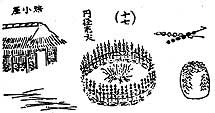
Many/most people consider sun-drying as the best method for drying Shiitake. However, sun-drying has the disadvantage that it slowly dries at a low temperature.
If dried slowly, Forest-grown Shiitake quickly decomposes after picking, the quality and taste will rapidly deteriorate.
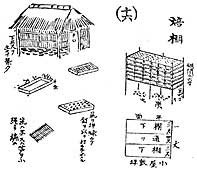
The strong sunlight of midsummer is fine, but the sunlight of spring and autumn during the harvest season is weak, making it unsuitable for drying in the sun. Until the advent of plastic bags, it wasn't easy to preserve dried Shiitake for a long time. Therefore, consumers' redried their Dried Shiitake in the sun to maintain their dryness.
It is not well-known that growers did not dry fresh Shiitake in the sun, and consumers redried their dried Shiitake in the sun. For the consumers, it made the most sense to sun-dry them in midsummer when the sun was strong.
In Japan during the 1600s, the drying of Shiitake was over open fires or charcoal. This is because the Umami component of Shiitake becomes stronger when higher temperature drying is applied. High-temperature drying is also necessary to improve the aroma. If the Shiitake is not dried completely, the flavor will rapidly deteriorate when stored at room temperature. Moisture content becomes the key factor for the taste and quality of Dried Shiitake.
Air Drying
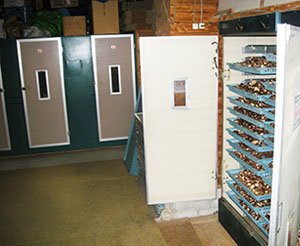
Our forest-grown Shiitake are pesticide-free and, therefore, very quickly loses their freshness and quality. The growers are immediately hot air-dry after harvesting, within about 20 hours at 40 to 55 degrees Celsius to preserve the Shiitake's flavor, color, and texture.
It takes about 24 hours to dry the Shiitake, so the growers will only pick enough Shiitake to fill the dryers. Harvesting more than their drier capacity will damage the fresh Shiitake. To utilize their dryers efficiently, growers fully load their driers, thereby, Forest-grown Shiitake come in all shapes and sizes. Forest-grown Shiitake that have been dried immediately after harvesting at high temperatures has the best taste and aroma.
Far-Infrared Drying
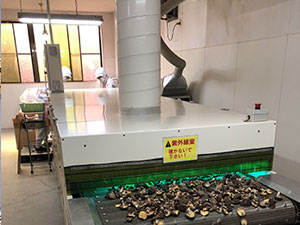
In the old days, Shiitake was dried over wood fires or charcoal fires to bring out the best taste and Umami. At SUGIMOTO, we use a more innovative approach using a far-infrared drying method.
Far-infrared drying further reduces the moisture content and removes all insect/microbe content. We redry the Growers' delivered dried Shiitake to less than 9% (competitors are about 12%). The Shiitake pass directly under a ceramic panel at 240 degrees Celsius for about four minutes. The internal temperature of the Shiitake mushrooms reaches 80 degrees Celsius to sterilize and remove any impurities. We are the only company in the world that has achieved zero insect eggs by using solely heating and sorting technology. We are the only company in the world that has received kosher certification for our pesticide-free raw natural forest cultivation (Kosher Certification requires no insect parts nor eggs to be detected under an electron microscope).
Sun Drying
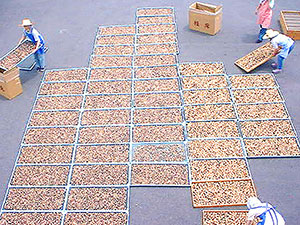
Historically, after drying at a high temperature to bring out the flavor and aroma, we again sun-dried the Dried Shiitake. This second sun-drying was done to further increase the vitamin D content. A substance called ergosterol in Dried Shiitake mushrooms is converted into vitamin D by ultraviolet rays.
When we were drying Shiitake under the sun in the middle of summer, many problems occurred. Problems such as weak ultraviolet sunlight in the middle of summer, clouds blocking the sunlight, and the question of contamination by foreign exposure due to outdoor elements, required us to re-think this process.
Consequently, the far-infrared drying and finishing process by ultraviolet irradiation was used to produce the highest vitamin D content in all vegetarian foods.
The food with the highest vitamin D content in the Food Composition Database of the Ministry of Education, Culture, Sports, Science, and Technology is dried kikurage (wood-ear mushroom): 128.5μg/100g. But, our dried shiitake mushrooms (Koshin) have 9680IU (242μg)/100g, which is much higher.
Sun Drying at Home
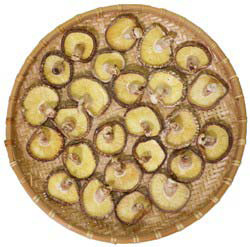
1. Spread the dried shiitake mushrooms on a colander so that they do not overlap.
If your dried shiitake mushrooms have absorbed moisture, dry them in the sun until they are dry (+ will increase Vitamin D content). Dry them in the sun for 30 minutes to 3 hours, as needed. Drying in the sun for 30 minutes to three hours is effective even for short periods, but longer exposure is better. If the ultraviolet rays are strong ("6" or above), one hour of sun drying is sufficient. The amount of ultraviolet rays varies depending on the season, so adjust accordingly.
Allow them to cool sufficiently before putting them in a bag. If you place dried shiitake mushrooms in a plastic bag immediately after drying in the sun, condensation will form inside the bag.

